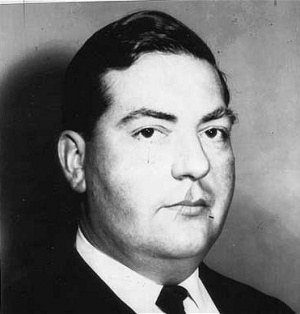Difference between revisions of "Anthony Cavendish"
m (Text replacement - " terrorism" to " "terrorism"") |
m (tidy references) |
||
| (2 intermediate revisions by one other user not shown) | |||
| Line 1: | Line 1: | ||
{{person | {{person | ||
|wikipedia=https://en.wikipedia.org/wiki/Anthony_Cavendish | |wikipedia=https://en.wikipedia.org/wiki/Anthony_Cavendish | ||
| − | |constitutes=spook, banker, journalist | + | |constitutes=spook, banker, journalist, deep state operative? |
|image=Anthony Cavendish.jpg | |image=Anthony Cavendish.jpg | ||
| + | |nationality=UK | ||
|birth_date=20 July, 1927 | |birth_date=20 July, 1927 | ||
| + | |birth_place=London, UK | ||
|death_date=12 January, 2013 | |death_date=12 January, 2013 | ||
| − | |description="Leading member" of Le Cercle. | + | |description="Leading member" of [[Le Cercle]]. |
}} | }} | ||
| − | + | '''Anthony Cavendish''' was a "former senior [[MI5]] man" and "an old [[Cercle]] hand".<ref>http://www.independent.co.uk/news/aitken-dropped-by-the-rights-secret-club-1258522.html</ref> | |
==Background== | ==Background== | ||
| − | Cavendish was born in [[London]], but raised in [[Switzerland]] and grew up speaking English, German, Swiss-German and French.<ref name="Times"> | + | Cavendish was born in [[London]], but raised in [[Switzerland]] and grew up speaking English, German, Swiss-German and French.<ref name="Times">http://www.thetimes.co.uk/tto/opinion/obituaries/article3660531.ece</ref> |
==World War II== | ==World War II== | ||
| − | He volunteered for the [[British Army]] in 1944 and served in [[Secret Intelligence Middle East]] (SIME) where he struck up a lifelong friendship with [[Maurice Oldfield]], a future [[Chief of the Secret Intelligence Service]].<ref name="Times"/><ref name="Independent"> | + | He volunteered for the [[British Army]] in 1944 and served in [[Secret Intelligence Middle East]] (SIME) where he struck up a lifelong friendship with [[Maurice Oldfield]], a future [[Chief of the Secret Intelligence Service]].<ref name="Times"/><ref name="Independent">http://www.independent.co.uk/news/obituaries/anthony-cavendish-intrepid-intelligence-officer-who-fought-terrorism-in-the-middle-east-8531488.html</ref> |
==Career== | ==Career== | ||
Following his demobilisation in 1948, he was recruited as the [[MI6]]'s youngest officer, aged 21, and worked in R5, the counterespionage section.<ref name="HarperCollins">Cavendish, Anthony (1997), ''Inside Intelligence'', HarperCollins, London.</ref> | Following his demobilisation in 1948, he was recruited as the [[MI6]]'s youngest officer, aged 21, and worked in R5, the counterespionage section.<ref name="HarperCollins">Cavendish, Anthony (1997), ''Inside Intelligence'', HarperCollins, London.</ref> | ||
| + | |||
| + | In May 1989 Cavendish made an extended appearance on the [[Channel 4]] discussion programme ''After Dark'', alongside [[Tony Benn]], [[Lord Dacre]], [[James Rusbridger]], [[Miles Copeland]] and others. | ||
==Deep political connections== | ==Deep political connections== | ||
Anthony Cavendish was a senior figure in [[Le Cercle]]. His ''[[Telegraph]]'' obituary cited his as "a leading figure, with [[Julian Amery]], MP, in running Le Cercle, a very private discussion group". It is unknown whether he was [[Le Cercle/Chairman (Europe)| European chairman]] of the group.<ref>http://www.telegraph.co.uk/news/obituaries/9871374/Anthony-Cavendish.html</ref> | Anthony Cavendish was a senior figure in [[Le Cercle]]. His ''[[Telegraph]]'' obituary cited his as "a leading figure, with [[Julian Amery]], MP, in running Le Cercle, a very private discussion group". It is unknown whether he was [[Le Cercle/Chairman (Europe)| European chairman]] of the group.<ref>http://www.telegraph.co.uk/news/obituaries/9871374/Anthony-Cavendish.html</ref> | ||
| − | |||
{{SMWDocs}} | {{SMWDocs}} | ||
| − | |||
==References== | ==References== | ||
{{reflist}} | {{reflist}} | ||
| − | |||
Latest revision as of 08:36, 5 August 2021
(spook, banker, journalist, deep state operative?) | |
|---|---|
 | |
| Born | 20 July, 1927 London, UK |
| Died | 12 January, 2013 (Age 85) |
| Nationality | UK |
| Member of | Le Cercle, Sacred Military Constantinian Order of Saint George |
"Leading member" of Le Cercle. | |
Anthony Cavendish was a "former senior MI5 man" and "an old Cercle hand".[1]
Background
Cavendish was born in London, but raised in Switzerland and grew up speaking English, German, Swiss-German and French.[2]
World War II
He volunteered for the British Army in 1944 and served in Secret Intelligence Middle East (SIME) where he struck up a lifelong friendship with Maurice Oldfield, a future Chief of the Secret Intelligence Service.[2][3]
Career
Following his demobilisation in 1948, he was recruited as the MI6's youngest officer, aged 21, and worked in R5, the counterespionage section.[4]
In May 1989 Cavendish made an extended appearance on the Channel 4 discussion programme After Dark, alongside Tony Benn, Lord Dacre, James Rusbridger, Miles Copeland and others.
Deep political connections
Anthony Cavendish was a senior figure in Le Cercle. His Telegraph obituary cited his as "a leading figure, with Julian Amery, MP, in running Le Cercle, a very private discussion group". It is unknown whether he was European chairman of the group.[5]
References
- ↑ http://www.independent.co.uk/news/aitken-dropped-by-the-rights-secret-club-1258522.html
- ↑ a b http://www.thetimes.co.uk/tto/opinion/obituaries/article3660531.ece
- ↑ http://www.independent.co.uk/news/obituaries/anthony-cavendish-intrepid-intelligence-officer-who-fought-terrorism-in-the-middle-east-8531488.html
- ↑ Cavendish, Anthony (1997), Inside Intelligence, HarperCollins, London.
- ↑ http://www.telegraph.co.uk/news/obituaries/9871374/Anthony-Cavendish.html